1. Effects of World War I
1.1. How did World War I end? What were the consequences of the postwar agreement?
1.2. How did agreements dating from the World War I and postwar periods impact the map of the Middle East?
1.3. What were the effects of World War I on ordinary people?
1.4. Why does the term “lost generation” refer to those who lived through or came of age during these years?
1.5. How did the post-World War I world order contribute to the collapse of the worldwide economy?
2. Rise of Totalitarian Governments After World War I
2.1. Why did communism and fascism appeal to Europeans in the 1930s?
2.2. What were key ideas of communism? How were the ideas translated on the ground?
2.3. What was totalitarianism, and how was it implemented in similar and different ways in Japan, Germany, Italy, and the Soviet Union?
2.3.1. Activity #2: Students will create a graphic organizer that can display the similarities and differences of totalitarianism in Japan, Germany, Italy, and the Soviet Union. This task will ask students to match the dictator to the correct country listed, years they were in power, the party name, the unifying ideas of the party/dictator, their economic policy, and other forms of control over the population. After the chart is completed, students will individually or with a partner discuss the similarities and differences they found through their investigation. Information will be found by students completing a gallery walk around to room to find the information needed. If we can, we can also do a class discussion to see if this investigation of WWII totalitarian leaders can be connected to (a) modern leader(s) and provide reasoning for their connection/similarity.
2.4. How did Nazis come to power? Why did ordinary people support them?
3. Causes and Consequences of World War II
3.1. Why was the death toll so high during World War II?
3.1.1. Activity #3: Have students watch the attached YouTube video (the small paperclip icon) that shows and breaks down the death toll during World War II. The video attached is filled with incredibly important information about the death toll including civilian deaths, soldier deaths, percentage killed based on ethnicity, country of origin, and death toll placed on a timeline to visually see were the most casualties occurred. This video also discusses reasons for high death toll in certain battles/places and compares it to other wars and more recent engagements. Students will watch this video and write a reflection (1-2 paragraphs) about this topic on what they found most shocking or what they understood better from watching the video.
3.2. What were the key goals of the Axis and Allied powers? How was the war mobilized on different fronts?
3.3. How did technology affect World War II?
3.4. How was World War II a total war? How did World War II’s actors, goals, and strategies compare with those of World War I?
3.5. How was the Holocaust carried out?
4. International Developments in Post World War II World
4.1. How did the Cold War develop?
4.2. How was the Cold War waged all over the world?
4.3. How did former colonies respond to the Cold War and liberation?
4.4. How and why did the Cold War end?
5. Nation Building in the Contemporary World
5.1. How have nations organized in the post–Cold War world?
5.2. How have nations struggled in similar and different ways to achieve economic, political, and social stability?
5.3. How have developing nations worked together to identify and attempt to solve challenges?
6. The World in 1750
6.1. How were most societies organized in the 1700s?
6.2. Who held power in the 1700s? Why?
6.3. What was the divine right of kings?
7. 1750-1917: Revolutions Reshape the World Democratic Revolutions
7.1. How were enlightened ideas a break from the past?
7.2. How did the "social contract" affect ordinary people?
7.3. What are individual or natural rights? Who received those rights in the 18th century?
7.4. Why did civic reformers argue for representative governments?
7.5. What were the consequences of trying to implement political revolutionary ideas in Europe, Latin America, and North America?
7.6. How do the French, American and Haitian Revolutions compare to one another?
7.7. How is national identity constructed?
8. Industrial Revolutions
8.1. Should this era of industrialization be called an Industrial Revolution? Why or why not?
8.2. What were the results of the industrial revolutions? How was technology, and the environment transformed by industrialization?
8.2.1. Activity #1: In small groups students will examine an assigned invention or discovery that advanced science or technology during the industrial revolution. These small groups will gather information about their invention, and present it to the class while placing it on a timeline that will be in front of the class. Students will investigate what the invention does, how it improved/changed production/ the lives of the population, who the inventor is, and what year it was invented to place it on the timeline accurately. The class will then come together and discuss how these can inventions are linked together. This activity will allow students to teach each other information while also allowing them to see connections that can be made as time and knowledge progresses.
